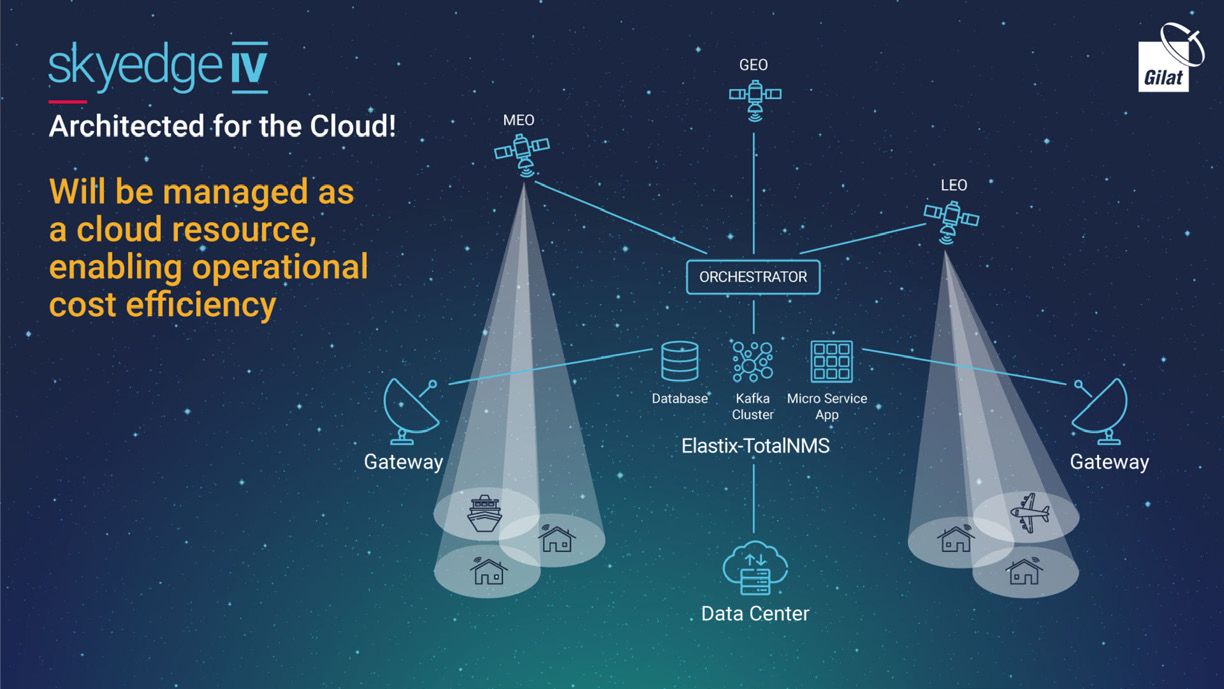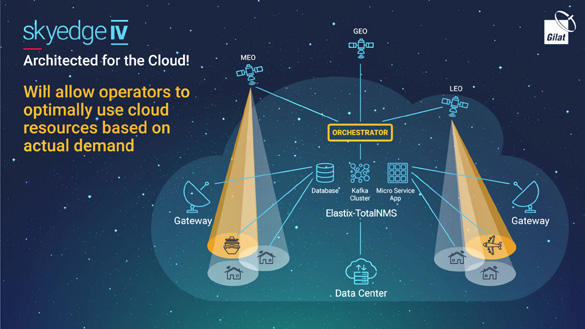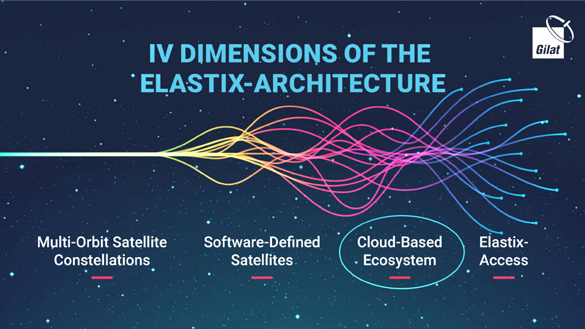Gilat Satellite Networks, headquartered in the innovation capital of the world, is a leading global provider of satellite-based broadband communications for over 35 years. The company creates and delivers deep technology solutions for satellite, ground and New Space connectivity and provides comprehensive, end-to-end solutions and services, all powered by innovative technology. Gilat believes in the right of all people to be connected and we are united in our resolution to provide communication solutions to all reaches of the world.

Would you please explain why many organizations are now considering moving their satellite communications platforms to the cloud?
Yaron Katriel
In today’s interconnected world, reliable and high-speed communication is vital for businesses, governments, and organizations to function efficiently. VSAT platforms have been a longstanding solution for satellite communications, enabling data transfer and connectivity in remote and challenging locations
However, the traditional on-premises deployment of VSAT platforms comes with inherent limitations and costs. To overcome these challenges, many are now considering moving their satellite communication platforms to the Cloud.
Two of the most compelling reasons organizations are moving their SATCOM platforms to the cloud are cost-effectiveness and flexibility. Cloud services operate on a pay-as-you-go model, eliminating the need for substantial upfront investments. This cost-efficiency is particularly attractive for organizations looking to optimize their communication infrastructure.
The cloud introduces an additional layer of flexibility that revolutionizes the way computing resources are managed. Dynamic scalability stands as a pivotal advantage of cloud computing. It represents the ability to effortlessly adjust computing resources as needed, either scaling up to meet increased demands or scaling down during periods of reduced activity.
This capability, in conjunction with the decoupling of software from hardware, empowers operators to respond swiftly and efficiently to changing workloads. This represents an additional dimension of cost-efficiency, whether running a private cloud with the operator’s hardware or utilizing public cloud services.
What other benefits can organizations expect from migrating to the cloud?
Yaron Katriel
Scalability is a crucial benefit. As businesses grow, their communication needs evolve. Cloud-based SATCOM solutions offer unmatched scalability, allowing organizations to seamlessly adjust satellite capacity based on fluctuating requirements. Furthermore, cloud-based deployments streamline system deployment and configuration by standardizing the VSAT platform infrastructure.
This approach allows the organization to treat its compute infrastructure as seamlessly as any other IT resource, effortlessly managing it using the familiar tools already in place within the organization’s IT ecosystem.

It sounds as though the cloud offers both cost savings and operational flexibility. What about the management and monitoring of VSAT platforms?
Yaron Katriel
Managing and monitoring on-premises VSAT platforms can be complex and resource-intensive. Cloud-based solutions simplify this by offering centralized management through user-friendly dashboards. For these reasons, and the ones mentioned above, migrating to the cloud means that operators can focus on enhancing their service capabilities rather than worrying about the intricacies of running their networks.
Can you explain more about how Gilat’s SkyEdge IV platform has been designed to take full advantage of the cloud?
Yaron Katriel
SkyEdge IV, Gilat’s nexgen, multi-service platform, has been architected with cloud capabilities in mind. The Elastix-Architecture was designed to harness the full potential of Infrastructure as a Service (IaaS) and Platform as a Service (PaaS) cloud models, making it an ideal solution for optimizing throughput in cloud environments. SkyEdge IV’s software-defined orchestration enables leveraging next-generation satellites for maximum performance.

How does SkyEdge IV integrate with cloud service orchestrators and what are the benefits?
Yaron Katriel
SkyEdge IV’s Elastix-TotalNMS is seamlessly integrated with cloud service orchestrators, enhancing the platform’s compatibility with cloud environments. The standard interfaces enable smooth communication between SkyEdge IV and various cloud management tools, such as Kubernetes. This integration simplifies the deployment and management of SkyEdge IV on cloud infrastructures. Consequently, this streamlined orchestration facilitates the efficient utilization of cloud resources, leading to enhanced operational performance and cost-effectiveness.
What about scalability? How does SkyEdge IV address this critical aspect in cloud environments?
Yaron Katriel
SkyEdge IV was specifically designed as a virtual platform, leveraging the benefits of virtualization to achieve optimal scalability. The platform can effortlessly scale its compute resources to handle varying workloads at different points of the network without the need for significant hardware upgrades.
In cloud environments, where scalability is a critical aspect, SkyEdge IV’s Elastix-Architecture allows operators to dynamically allocate resources as required, ensuring that the system can effectively handle peaks in demand without any performance bottlenecks. This flexibility results in an agile and responsive system that efficiently utilizes cloud resources, minimizing wastage and optimizing performance.
What other benefits are achieved by hosting SkyEdge IV in the cloud?
Yaron Katriel
Another notable advantage is the array of complimentary offerings it provides. These include infrastructure monitoring tools, robust security features, and automatic updates to the latest operating systems, all bundled within the cloud ecosystem at no additional cost.
It’s clear that migrating to the cloud offers numerous advantages.

How does Gilat assist network operators in this transition?
Yaron Katriel
Gilat is committed to empowering network operators with a seamless transition to the cloud. Our expertise enables network operators to deliver data migration, scalability, and high availability, empowering them to stay competitive in today’s interconnected world. The Elastix Architecture of SkyEdge IV supports a phased approach to migration, allowing each component, such as the Data Center, the Gateway, and the NMS, to be independently migrated when the time is right. This approach reduces risks and enables decisions based on economic viability.
Would you elaborate further on the economic advantage of migrating to the cloud?
Yaron Katriel
The migration of VSAT platforms to the cloud is a transformative step for network operators. SkyEdge IV will be managed as a cloud resource, bringing several operational cost efficiencies. Cloud environments provide resource management features that enable automated provisioning and de-provisioning of virtual machines, reducing the need for manual intervention.
This automated management streamlines administrative tasks and eliminates the need for dedicated hardware maintenance, leading to cost savings in terms of human resources and infrastructure upkeep. Moreover, the pay-as-you-go model of cloud services ensures that organizations only pay for the resources they consume, enabling cost optimization by aligning expenses with actual usage. And the agility of the cloud makes it the optimal choice for operating with next-generation, software-defined satellites.
By partnering with Gilat, operators can embrace the power of the cloud and unlock the full potential of their VSAT communication networks. We are here to support their journey to a more efficient and connected future.
www.gilat.com


